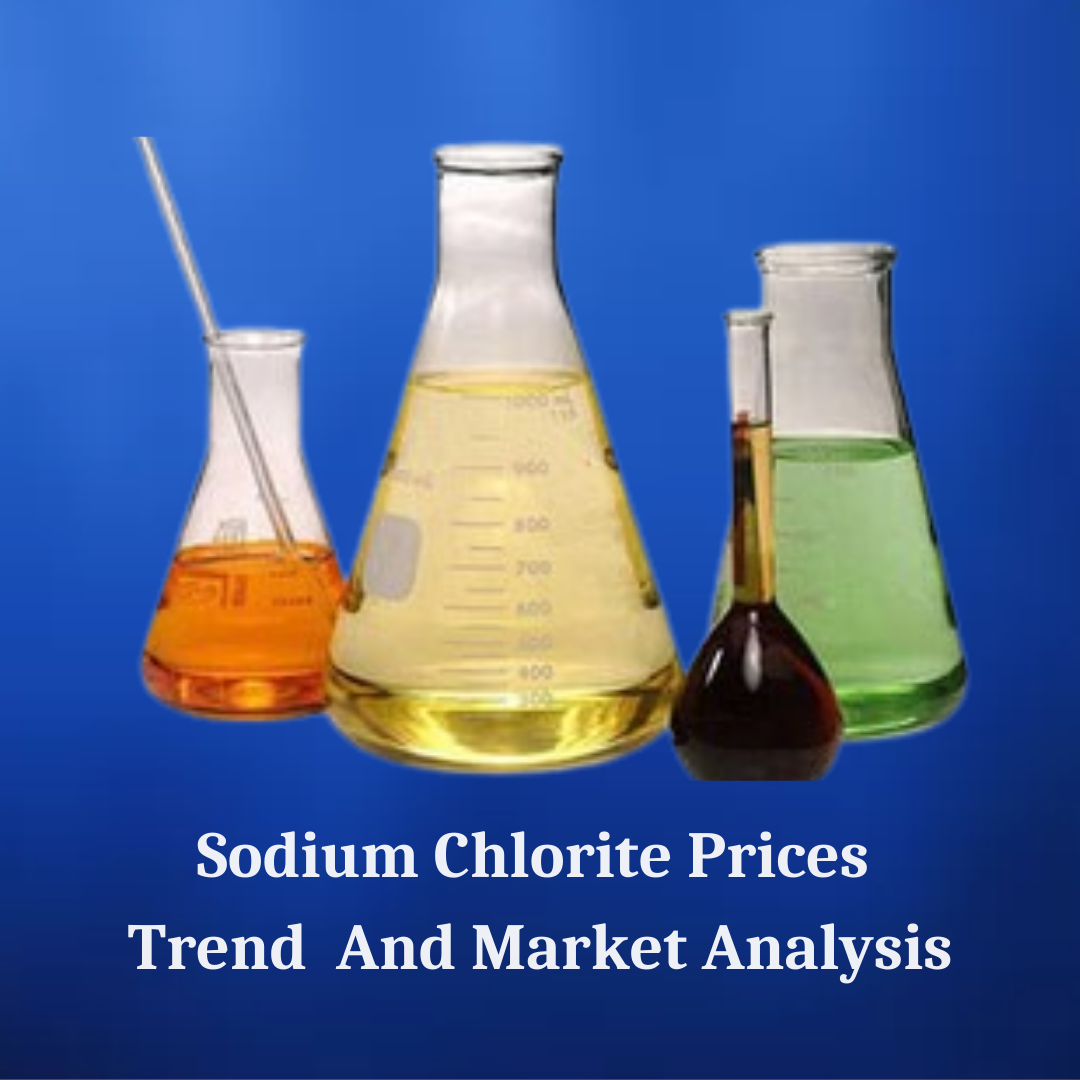
Sodium chlorite is a chemical compound widely used for its strong oxidizing properties. It’s most commonly utilized in water treatment, bleaching in the paper and textile industries, and disinfection across food processing and medical sectors. It’s usually found in powder or liquid form and is valued for generating chlorine dioxide, a powerful disinfectant. As demand rises for clean water, sanitary production environments, and efficient industrial bleaching agents, sodium chlorite prices have become an important product in global markets. In 2025, the market continues to grow steadily due to its essential role in industries focused on hygiene, safety, and sustainable practices.
👉 👉 👉 Please Submit Your Query for Sodium chlorite Price trends, forecast and market analysis: https://tinyurl.com/2wmppd7w
Price Trend and Market Dynamics in 2025
The price of sodium chlorite in 2025 is expected to follow a stable to slightly rising trend. This is largely because of increasing demand in water purification and industrial disinfection. However, price changes also depend on the availability and cost of raw materials, mainly sodium chlorate and hydrochloric acid, which can fluctuate due to energy prices and supply chain logistics. Environmental regulations may also push prices up, as stricter safety and handling requirements can increase production costs. On the other hand, competition among global suppliers helps maintain balance and prevent sudden price surges. Regional differences in production capacity, especially between Asia and North America, can also influence pricing.
Market Size and Share Insights
The global sodium chlorite market is valued in the range of USD 200–300 million and is projected to grow at a moderate pace through 2025. Asia-Pacific dominates the market due to large-scale industrial activities in China and India, where sodium chlorite is produced and consumed in significant volumes. North America follows, especially in water treatment and food safety sectors. Europe has a steady demand as well, largely tied to environmental compliance and healthcare needs. The paper and pulp industry remains one of the biggest users of sodium chlorite, though demand from healthcare and municipal water treatment is increasing in market share.
Industry Growth and Segmentation
Growth in the sodium chlorite industry is largely segmented by end-use industries, including water treatment, paper manufacturing, textiles, food processing, and healthcare. Water treatment holds the largest share, as sodium chlorite is key in generating chlorine dioxide for disinfecting drinking water and industrial waste. The healthcare sector is also becoming a growing segment, using sodium chlorite for surface sterilization in hospitals and laboratories. Within food processing, it’s used to clean surfaces and equipment to ensure food safety. Textiles and paper continue to rely on sodium chlorite for effective bleaching, especially where high brightness and whiteness levels are required. This multi-sector demand keeps the market diversified and resilient.
Key Trends and Technological Advances
One of the notable trends in the sodium chlorite market is the increasing focus on safe and efficient chlorine dioxide generation systems. Manufacturers are now offering more compact and automated generators to make usage easier and reduce waste. Another trend is the rising demand for low-impurity grades, especially in medical and food applications. Technological advances in handling and packaging are also emerging, with better leak-proof containers and stabilizing agents improving shelf life and safety. Additionally, there is growing research into greener production methods that lower environmental impact and meet new sustainability standards, particularly in Western markets.
Opportunities and Market Drivers
The sodium chlorite market in 2025 is full of opportunities, particularly in areas where clean water and sanitation are growing concerns. With climate change and urbanization putting pressure on municipal water systems, the demand for reliable and effective disinfection agents like sodium chlorite is rising. There’s also a major opportunity in expanding the use of sodium chlorite in food-grade sanitation, where hygiene regulations are tightening across the globe. Emerging economies represent a strong area for growth, as they invest more in public health infrastructure and industrial production. Additionally, with more attention being given to pandemic preparedness and cleanliness, the role of sodium chlorite in healthcare is expected to increase.
Major Players and Competitive Landscape
Several major chemical companies are active in the sodium chlorite market, including OxyChem, Ercros S.A., Shree Chlorates, and International Dioxcide. These companies offer a range of sodium chlorite concentrations and chlorine dioxide generation systems tailored for different industries. China hosts many of the world’s largest sodium chlorite producers, supplying both domestic and export markets. Competition is driven by product quality, pricing, safety standards, and supply reliability. Many companies are also now working to meet more stringent environmental regulations, offering eco-friendly production methods and packaging solutions to stay competitive and appeal to customers looking for greener alternatives.
Industry Challenges and Risks
The sodium chlorite market is not without its challenges. First and foremost is the strict regulatory framework governing the production, handling, and transportation of the chemical, due to its reactive and potentially hazardous nature. Companies must invest in compliance and safety infrastructure, which can raise operating costs. Supply chain disruptions—such as those caused by raw material shortages or international trade restrictions—can also impact availability and pricing. Environmental concerns about chemical runoff and improper handling further complicate operations, especially in sensitive areas. Finally, the niche but growing concern over public perceptions of chemical disinfectants in food and water sectors can pose image challenges for producers and sellers.
Future Outlook and Forecast to 2025
Heading toward the end of 2025, the sodium chlorite market is expected to maintain stable growth. The demand for safe water, food hygiene, and medical sanitation ensures a steady need for this compound across multiple sectors. Advancements in delivery systems and more sustainable production technologies will continue shaping the industry. Despite challenges such as regulatory hurdles and raw material price fluctuations, the essential role of sodium chlorite in health, safety, and industrial applications keeps it in strong demand. With emerging markets expanding infrastructure and global attention focused on environmental cleanliness and infection prevention, the future of sodium chlorite remains solid and full of potential.